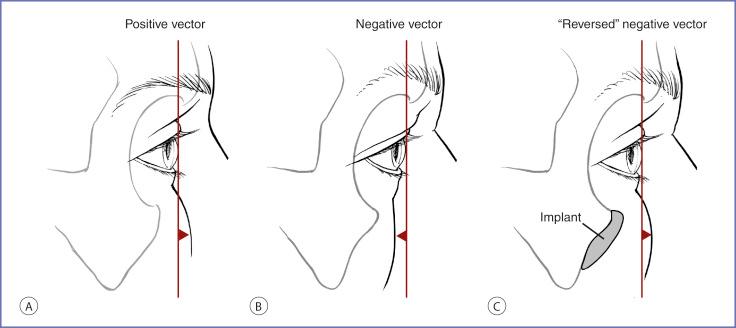Physical Address
304 North Cardinal St.
Dorchester Center, MA 02124
The upper midface skeleton has direct and indirect influences on the appearance of the face and, particularly, the eyes. The relationship between the globe and the orbital rims will determine if the eyes appear prominent or deep set. Because the infraorbital rim and upper midface skeleton support the lower eyelids and the cheek soft tissues, their projection impacts on lid and cheek position. Patients with deficient skeletons are more likely to undergo premature lower lid and cheek descent with aging. This lack of skeletal support predisposes to lower lid malposition after blepharoplasty and limits the efficacy and longevity of midface lifting. This chapter demonstrates the impact that infraorbital rim augmentation alone, or together with other soft tissue manipulations, has on periorbital appearance. It includes techniques not only for augmenting the infraorbital rim with alloplastic implants, but also for elevating the midface soft tissues as well as repositioning the lower lid and lateral canthus.
The relationship of the globe to the orbital rims is a primary determinant of the appearance of the upper third of the face. Normal values, that is, averages calculated from a cohort of young, healthy adults, have been published. They are presented in Fig. 8.1 . On average, the surface of the soft tissues overlying the supraorbital rim lies 10 mm anterior to the cornea, and the surface of the soft tissues overlying the infraorbital rim lies 3 mm behind the anterior surface of the cornea. This implies that the supraorbital rim usually projects 13 mm beyond the infraorbital rim. When the orbital rims have a greater projection beyond the anterior surface of the cornea, the eyes appear “deep set.” When the orbital rims project less, the eyes appear “prominent.” In addition to being predisposed to corneal exposure-related problems, overly prominent eyes are usually considered less attractive.

Jelks and Jelks categorized globe–orbital rim relationships and the tendency for the development of lower lid malposition after blepharoplasty ( Fig. 8.2 ). On sagittal view, they placed a line or “vector” between the most anterior projection of the globe and the malar eminence and lid margin. A “positive vector” relationship exists when the most anterior projection of the globe lies behind the soft tissues overlying the midface skeleton in the parasagittal plane. A “negative vector” relationship exists when the most anterior projection of the globe lies beyond the soft tissues overlying the midface skeleton in the parasagittal plane. This relation reflects a deficiency in midface projection. Jelks and Jelks warned, similar to Rees and LaTrenta, that patients whose orbital morphology has a “negative vector” relationship are morphologically prone to lid malposition after lower blepharoplasty.

There is a considerable variability in globe–orbital rim relations as a result of the wide variations in human facial skeleton morphology. It is influenced by ethnicity and sex, and changes with aging.
Migliori and Gladstone determined the normal range of globe protrusion for white and black adults. Using the Hertel exophthalmometer, which measures projection of the anterior surface of the cornea beyond the lateral orbital rim, they found that the range for white adults was 10 mm; for black adults it was 12 mm. In addition to determining a range of normal values, they documented racial and sexual differences in globe projection. When globe projection was measured relative to the lateral orbital rim, men’s globes, on average, were 2 mm more prominent than women’s, and black men’s and black women’s globes were 2 mm more prominent than those of white men and white women.
Pessa et al. showed that the globe–orbital rim relationship changes with age. Retrusion of the infraorbital rim with aging makes the eyes appear more prominent by changing globe–rim relations, and exaggerates lower lid fat prominence, particularly in those who tend toward maxillary hypoplasia. These findings and surgical maneuvers to rejuvenate this anatomy are described in Chapter 14 .
Augmentation of the infraorbital rim with an alloplastic implant in patients with midface deficiency can bring it into a better relationship with the globe, thereby “reversing the negative vector” ( Fig. 8.2 ).
Become a Clinical Tree membership for Full access and enjoy Unlimited articles
If you are a member. Log in here